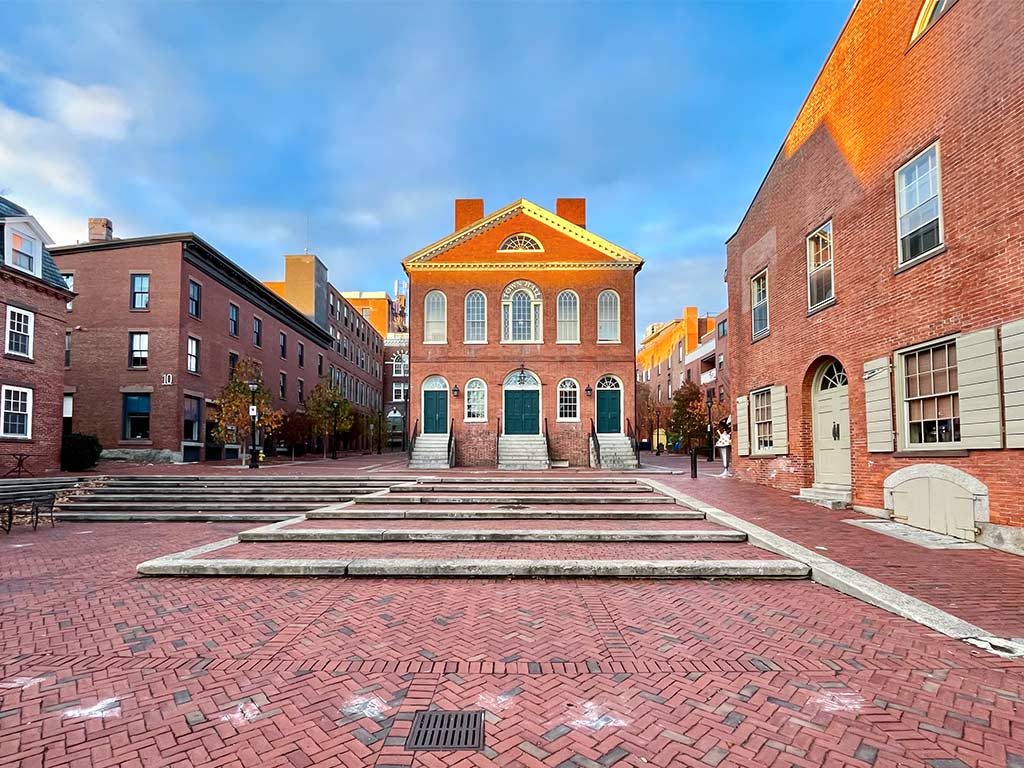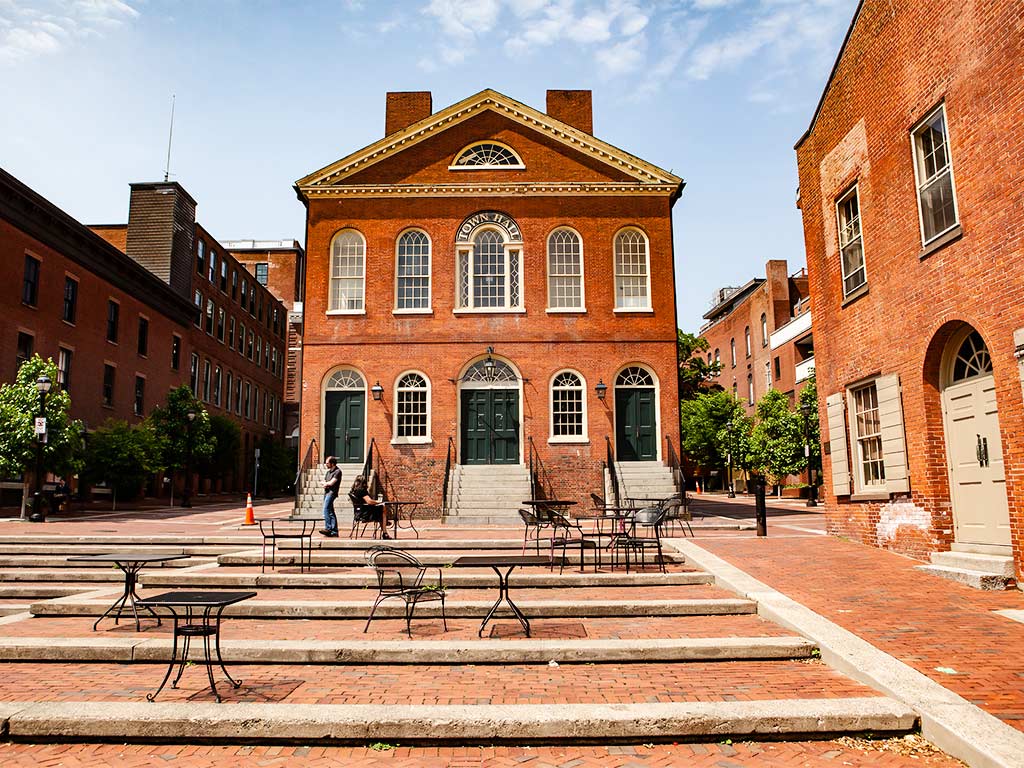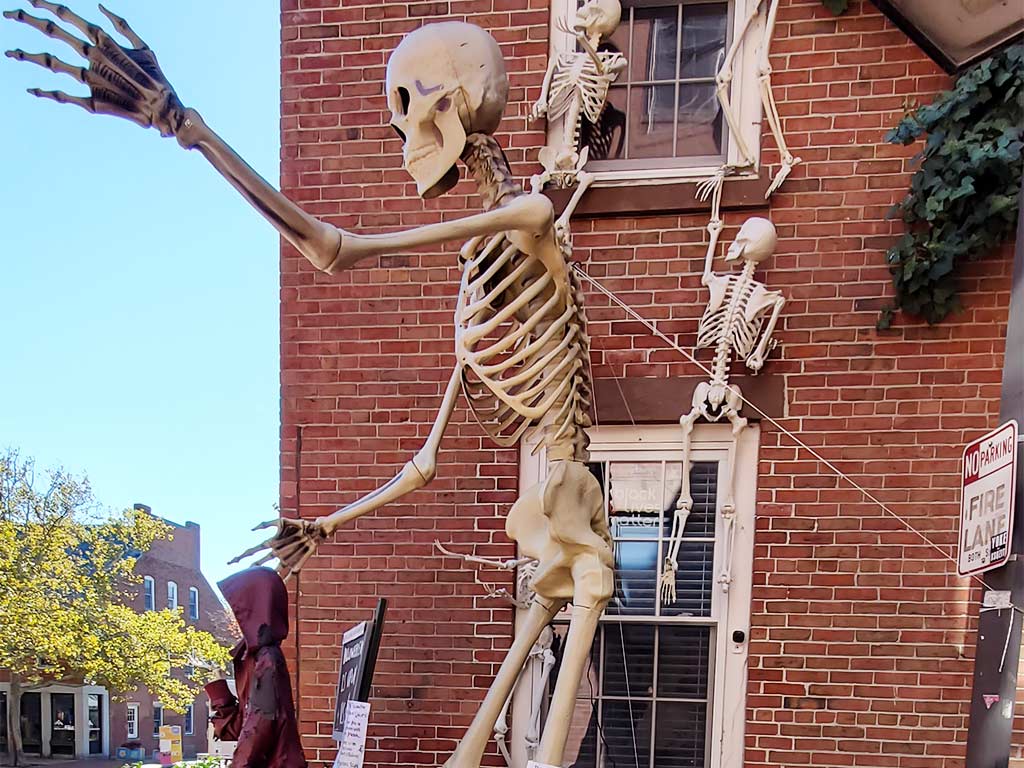Located in the heart of Salem, Massachusetts, the Old Town Hall stands as a testament to the city’s rich history and cultural heritage. Established in the early 19th century, this iconic building has witnessed significant events and transformations.
In 1972, the surrounding area was recognized for its historical importance and added to the National Register of Historic Places, marking the beginning of its preservation journey.
Over the years, the Old Town Hall has evolved, serving various community functions and undergoing renovations to maintain its structural integrity.
Notably, it became a filming location for the beloved 1992 Disney movie “Hocus Pocus,” embedding itself further into popular culture.
Today, it continues to be a vivid part of Salem’s heritage, housing the Salem Museum and serving as a venue for public meetings and community events.
Overview of Salem’s Old City Hall

Salem’s Old City Hall is a historic building located in Salem, Massachusetts, USA.
Here’s an overview:
The Architectural Significance
Salem’s Old City Hall, constructed from 1837 to 1838, stands as a prime example of Greek Revival architecture. Architect Richard Bond, renowned for designing Gore Hall at Harvard and the Bowdoin Square Church in Boston, crafted the building.
The structure features perfect proportions and a facade reminiscent of Robert Mills’s designs. Ceiling rosettes in the Chamber mirror those created by Alexander Parris for Faneuil Hall Market. Despite its small size, the building exudes strength and dignity.
Historical Milestones
City Hall first opened its doors to the City Council on May 31, 1838, with a formal dedication on June 8, 1838. Over the years, several expansions and renovations have been undertaken to modernize the facility.
A significant rear extension in 1878 doubled the building’s size without altering its street appearance. Artifacts from 1837, including local newspapers and the City’s Charter, remain buried under the cornerstone laid on September 6, 1837.
In 1979, an expansion was added to house city archives. Modern accessibility improvements, including an exterior elevator, were installed in 2010.
These upgrades, funded by a $300,000 grant from the U.S. government, enhanced the building’s accessibility for people with disabilities.
In 2012, a $2 million restoration project commenced to repair the brick walls, roof, and windows, ensuring the building’s preservation.
Key Events at Old City Hall

Salem’s Old City Hall has witnessed numerous key events throughout its rich history.
Here are some notable examples:
1836: Becoming a City
In 1836 Salem transitioned from a town to an incorporated city. This transformation was pivotal, marking the beginning of Salem’s structured municipal governance.
The move facilitated the establishment of a centralized administrative headquarters, leading to the construction of the Old City Hall in 1838.
The building became a symbol of civic pride and a hub for local government activities. Its Federal-style architecture stands as a testament to the city’s rich historical heritage and architectural legacy.
Historical Renovations and Restorations
In 1979 a significant expansion was added to house city archives. The 2010 installation of an exterior elevator improved handicapped access, funded by $300,000 from the US Government.
A major $2 million restoration started in 2012, focusing on the exterior, including brick walls, roof, and windows. In 2015 Campbell Construction Group and Gray Architects restored 36 out of 66 Palladian-style windows, addressing broken panes, rotted sills, and damaged pulley systems.
Now, Old Town Hall is a stop on the Salem Heritage Trail, preserving its historical significance.
The Ghost Stories of Old City Hall

Salem’s Old City Hall, steeped in history and mystique, has generated its fair share of ghost stories and eerie tales.
Here are some of the haunting legends associated with this iconic building:
Tales of the Tunnels Below
The tunnels below Salem’s Old City Hall have fostered numerous ghost stories over the years. These subterranean passages, initially constructed in the 19th century, were reputedly used for transporting goods discreetly to avoid taxes.
Local tales suggest these tunnels were also used for more nefarious purposes, including smuggling and secret meetings.
According to historical accounts, the eerie ambiance and hidden corners of the tunnels have contributed to their haunted reputation. Archaeological studies reveal various artifacts and remnants, adding layers to the city’s mystique.
Reported Ghostly Encounters
Over the decades, numerous ghostly encounters have been reported at Old City Hall. Visitors and staff have recounted unexplained cold spots, disembodied voices, and sudden chills.
One prevalent story involves a spectral figure seen roaming the building’s main hallways at night. Security footage and eyewitness accounts have supported these claims, though no definitive evidence exists.
Paranormal investigators often frequent the site, hoping to capture proof of the afterlife. These reported experiences add to Salem’s rich tapestry of supernatural lore, making Old City Hall a point of interest for ghost hunters and history buffs alike.
Preservation and Legacy
Preservation and legacy are paramount when it comes to Salem’s Old City Hall, ensuring that its historical significance endures for future generations.
Here’s how preservation efforts contribute to its legacy:
Efforts to Preserve the Historical Site
Salem’s Old City Hall has undergone several preservation efforts to maintain its historical and architectural significance. Since 1979, expansions and improvements aimed at modernizing the facility have been implemented.
A 1979 expansion housed city archives, ensuring safe storage of historical documents. In 2010, an exterior elevator was added to enhance accessibility, funded by a $300,000 grant from the US Government.
In 2012, a comprehensive $2 million restoration project commenced, focusing on exterior repairs including the brick walls, roof, and windows.
This initiative, completed in 2013, ensured that the structure remained sound and visually consistent with its original Greek Revival design.
Old City Hall in Modern Times
Old City Hall continues to serve as a symbol of Salem’s historical and civic pride. The addition of handicapped access in 2010 significantly modernized the facility, making it accessible to all visitors.
Despite these updates, the building retains much of its 19th-century charm, thanks in part to the meticulous restoration work completed over the years.
Today, Old City Hall stands not only as a functional civic building but also as a testament to Salem’s commitment to preserving its rich architectural heritage.
Ongoing preservation efforts ensure that future generations can appreciate and utilize this historic site. The structure remains a focal point of the community, symbolizing both Salem’s history and its continued dedication to preserving its past.
Frequently Asked Questions
When was Salem’s Old City Hall built?
Salem’s Old City Hall was built in 1838 under the supervision of Mayor Leverett Saltonstall.
What architectural style is Salem’s Old City Hall?
Salem’s Old City Hall is designed in the Greek Revival style.
Were there any significant expansions to Old City Hall?
Yes, significant expansions were made in 1878 and 1979 to accommodate more city offices while preserving the historic facade.
What was the focus of the 2012 restoration project at Old City Hall?
The 2012 restoration project, costing $2 million, focused on maintaining the Greek Revival style by repairing the exterior elements like brick walls, roof, and windows.
Are there any tunnels beneath Old City Hall in Salem?
Yes, there are rumored tunnels beneath Old City Hall, believed to have been used for smuggling, contributing to its mystique and haunted reputation.
Conclusion
Salem’s Old City Hall exemplifies the city’s rich history and architectural heritage. Built in 1838 under Mayor Leverett Saltonstall’s supervision, the building has been an integral part of Salem’s civic landscape.
The cornerstone, laid on September 6, 1837, contained historical artifacts like local newspapers, the Mayor’s speech from 1836, and the City Charter.
In 1878, an extension at the rear doubled the building’s size. This expansion accommodated more city offices without altering its historic facade.
The 1979 expansion, coupled with the addition of an exterior elevator in 2010, modernized the facility to improve accessibility without compromising its historical integrity. These updates were funded by $300,000 from the US Government.
Jaclyn Lowe